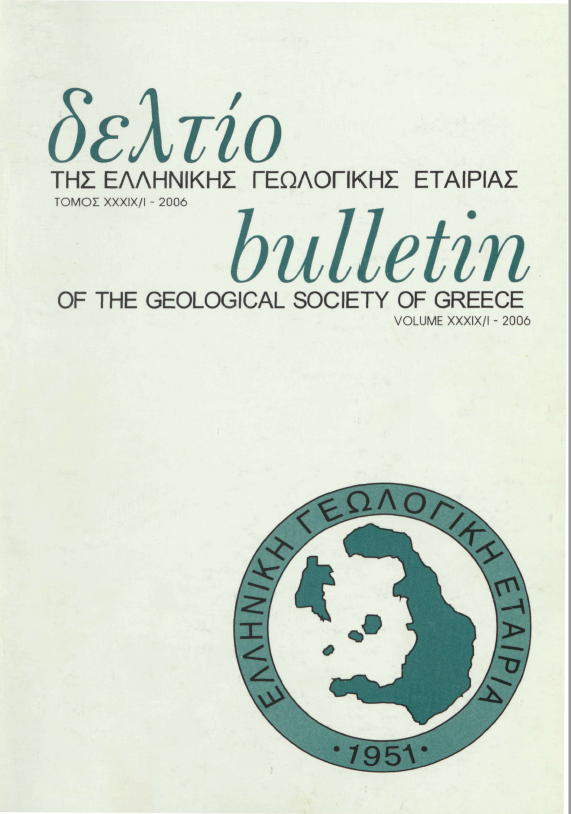HISTORY, PHILOSOPHY AND APPLICATION OF GLOBAL BOUNDARY STRATOTYPE SECTIONS AND POINTS. NEW REVISIONS OF GEOLOGICAL TIME SCALE
Abstract
In the last 150 years, the limits of the so called "formal" geochronological/ chronostratigraphical units were determined by several rock researchers using geohistorical events in several ways. The lack of standardisation made them useless for a global scale correlation. During the last two decades, the development of the field and laboratories techniques, the studies of radiogenic and stable isotopes, the improved evaluation of fossil files, the evaluation of paleomagnetic data and the application of cyclostratigraphy, improved the quality of data and contributed to the creation of the most upto-date International Chronostratigraphic Scale, including new subdivisions and determination of the boundaries of geological periods. The compiled New Geological Time Scale GTS 2004 integrates the most recent results of these new methods and was constructed by the International Union of Stratigraphy (ICS), in 2004, presiding F.M. Gradstein, from the University of Oslo, along with 38 other specialists. The new revised Geological Scale encompasses selected new methods that provide the most reliable information. The last Geological Time Scale incorporates important changes and is based on the application of the Global boundary Stratotype Section and Point (GSSP). Almost 50 GSSP have been defined up to now. Despite the enormous efforts for the construction of the most complete Geological Time Scale, a modified version needs the support and consent of the entire geological science community.
Article Details
- How to Cite
-
Δερμιτζάκης Μ. Δ. (2006). HISTORY, PHILOSOPHY AND APPLICATION OF GLOBAL BOUNDARY STRATOTYPE SECTIONS AND POINTS. NEW REVISIONS OF GEOLOGICAL TIME SCALE. Bulletin of the Geological Society of Greece, 39(1), 28–49. https://doi.org/10.12681/bgsg.18442
- Section
- Palaeontology, Stratigraphy and Sedimentology

This work is licensed under a Creative Commons Attribution-NonCommercial 4.0 International License.
Authors who publish with this journal agree to the following terms:
Authors retain copyright and grant the journal right of first publication with the work simultaneously licensed under a Creative Commons Attribution Non-Commercial License that allows others to share the work with an acknowledgement of the work's authorship and initial publication in this journal.
Authors are able to enter into separate, additional contractual arrangements for the non-exclusive distribution of the journal's published version of the work (e.g. post it to an institutional repository or publish it in a book), with an acknowledgement of its initial publication in this journal. Authors are permitted and encouraged to post their work online (preferably in institutional repositories or on their website) prior to and during the submission process, as it can lead to productive exchanges, as well as earlier and greater citation of published work.



